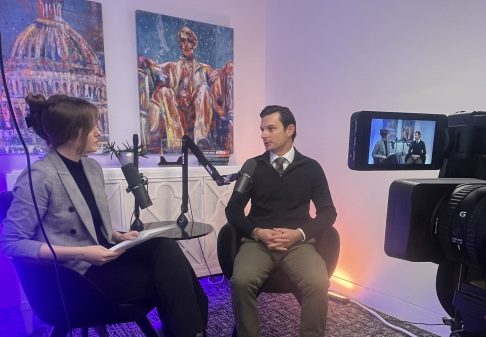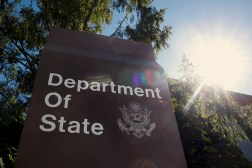As feds’ job satisfaction rises, IT and cyber workers’ lags — ‘Best Places to Work’ report
Federal employees are more satisfied and committed to their work than they have been in nearly five years, according to a new Partnership for Public Service report, but IT and cybersecurity personnel appear to lag behind the bunch.
The data are included in PPS’ latest annual “Best Places to Work in the Federal Government” rankings, and based largely on the Office of Personnel Management’s Federal Employee Viewpoint Survey. While the pack of top agencies to work for has remained largely unchanged from years past, this year’s report shows government as a whole becoming a more attractive employer.
Overall federal employee satisfaction and commitment jumped by 1.2 points in 2015 to 58.1 percent after a four-year skid. The primary factor influencing that, the report says, is effective leadership — particularly senior leadership. While that score remains low — 43.8 percent — it’s a 1.4 point improvement on last year, when it dropped three points. Every year PPS has produced the rankings since its inception in 2003, leadership has ranked as the primary factor influencing employee satisfaction and commitment.
Still, the overall satisfaction and commitment score is well below that of the private sector. Survey research organization Sirota claims the satisfaction rate for private sector employees in 2015 is 76.7 percent.
And the news is worse for federal IT and cybersecurity specialists, who rank the lowest among five mission-critical occupations in government. With a score of 56.2 percent, IT and cyber professionals are nearly two points less satisfied than employees governmentwide. Economists, the repost shows, are the most satisfied at a 68.1 percent rate. This was the first year PPS included a breakdown by job occupations.
But the rankings are an opportunity for improvement, giving federal leaders an additional set of data to improve the workforce, PPS President and CEO Max Stier said in a statement.
“The employee voice is one of the most powerful tools that federal leaders have to understand their organizations,” Stier said. “The Best Places to Work in the Federal Government data can be used to increase employee commitment and improve performance as agencies strive to better serve the American public.”
And it appears things are looking brighter than they have in recent years. In 2015, governmentwide data showed increased employee satisfaction in all 10 workplace categories PPS takes into account, including the already-mentioned leadership, as well as innovation, support for diversity, work-life balance and pay. Last year, seven of the 10 scores dropped. Likewise, more than 70 percent of individual agencies saw satisfaction increases, compared to 43.1 percent last year, and 24 percent the year before that.
As for the top-ranked agencies to work for in 2015, based on size, the results look very similar to last year’s. Again, NASA ranked first for large agencies, and the Federal Deposit Insurance Corporation snagged the top spot for medium-sized agencies, now for the fifth year in a row. The Federal Mediation and Conciliation Services jumped from the second spot in last year’s ranking of small agencies to the top this year, and the Tennessee Valley Authority’s Office of the Inspector General was the top-ranked agency subcomponent in 2015 after not placing in the top 10 in last year’s report.
Here are the top 5 agencies from each category:
Large federal agencies (15,000 or more employees):
1. National Aeronautics and Space Administration
2. Intelligence Community
3. Department of Justice (tie)
3. Department of State (tie)
5. Department of Commerce
Mid-size federal agencies (1,000 to 14,999 employees):
1. Federal Deposit Insurance Corporation
2. Peace Corps
3. Government Accountability Office
4. Federal Trade Commission
5. Federal Energy Regulatory Commission
Small federal agencies(100 to 999 employees):
1. Federal Mediation and Conciliation Service
2. Overseas Private Investment Corporation
3. Federal Labor Relations Authority
4. National Endowment for the Humanities
5. Surface Transportation Board
Agency subcomponents:
1. Office of the Inspector General (Tennessee Valley Authority)
2. Office of the General Counsel (Federal Energy Regulatory Commission)
3. U.S. Army Audit Agency (Army)
4. Environment and Natural Resources Division (Justice)
5. Office of Budget, Finance, and Award Management (National Science Foundation)






